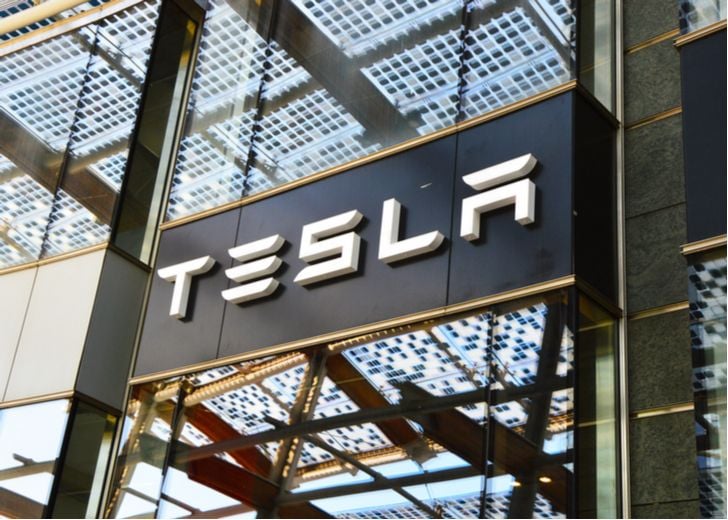Given the headlines surrounding Tesla (NASDAQ:TSLA) last week and early this week, Wednesday’s news shouldn’t be that surprising. As of December 30th the electric car company was reported to be sitting on more than 3000 of its Model 3 vehicles. Most current and prospective owners of TSLA stock would have expected those automobiles to already be spoken for and delivered, given the oft-touted demand for that lower-cost car.
And these vehicles were unsold despite the impending end to a key tax break for U.S. buyers of electric vehicles. As of January 1st, the $7500 tax credit was cut in half, so you’d think people would have been scrambling to get their purchases in just under the wire.
Yet, there it is. Last quarter’s 90,700 delivered EVs wasn’t quite the 92,000 analysts were collectively expecting. Making matters more alarming is the decision to lower the sticker price of all of its electric vehicles by $2000, offsetting the diminished tax benefit, but calling into question the actual strength of demand for Tesla’s automobiles.
The really bad news? The rough start to 2019 may be a glimpse of what’s to come for TSLA, with two specific headwinds now becoming inescapable.
Bye-Bye Tax Break
It’s been the subject of a long debate: How important is the $7500 tax credit to the electric vehicle industry in the United States, and to Tesla in particular?
Roth Capital Partners analyst Craig Irwin notes “The price cut is what’s driving the stock lower, as it openly acknowledges the sunset of subsidy dollars is a material headwind.”
Whatever the tax credit’s importance, it was already shrinking. Even keeping 44 of Tesla’s sales centers open through midnight on December 31st — an idea that looked a bit desperate in its own right — in an effort to lure last-minute tax-minded drivers didn’t help get the company over its fourth-quarter delivery hump.
That’s still not the biggest worry TSLA stock holders have on their plate, however.
Here Comes the Competition
Ford Motor Company (NYSE:F) and General Motors (NYSE:GM), despite an opportunity to do so, haven’t yet proven significant threats to Tesla. Tesla still dominates the U.S. electric-vehicle market
, and is doing pretty well overseas too.
That’s on the verge of changing, however, before Tesla has reached the scale and viability it truly needs to establish a floor for TSLA stock.
It’s a long-term initiative to be sure, but Ford’s plan to offer 40 all-electric vehicles by 2022 will be one realized in stages. Most of those vehicles will become available during the latest part of the proposed timeline, as the $11 billion investment needed to make those plans a reality will take time to deploy. Milestones will be met in the meantime though.
GM is arguably even better positioned to further penetrate the EV space. It’s already found measurable success with its Volt and Bolt programs and that can be leveraged going forward.
Those aren’t unknowns to the market, however. Other more Tesla-like rivals are quietly poised to shake things up well before Ford and GM make electric vehicles a significant part of their revenue mix.
Case(s) in point: BMW and Audi already offer electric vehicles in the United States as well as abroad. But, 2019 could be an outright explosive year in terms of electric SUV unveilings. Jaguar, Volvo and Mercedes are all planning launches of new battery-powered SUVs this year which will compete with Tesla’s Model X.
Volkswagen, meanwhile, says it will introduce a new electric vehicle almost every month in 2019, and beyond. The company believes its changing portfolio will allow it to sell 150,000 EVs in 2020, and ramp that figure up to an annualized pace of one million by 2025…. numbers that put the carmaker in the same league as Tesla. That mix will also feature a low-cost electric vehicle to directly compete with the Model 3.
Even Mazda, which thus far has steered clear of the EV arena, will be joining the battery-powered car fray this year.
In the meantime, smaller (but more focused) newcomers Faraday and NIO are turning heads. In December NIO was estimating sales of 7000 of its all-electric SUVs during the fourth quarter, making at least a small dent in Tesla’s share by a company that wasn’t selling any mass production EVs a year ago. It’s still working to roll out cars in the U.S.
And that’s only a small sampling of what’s to come sooner than later. Collectively, it’s a level of competition Tesla has never had to face, and that competition will only improve as time marches on.
Bottom Line for TSLA Stock
The detail current and prospective Tesla shareholders will struggle with the most? Tesla’s vehicles will more or less be comparable in appearance and quality to its competitors. It’s still the pioneer of the business, much like Netflix (NASDAQ:NFLX) created the streaming video industry out of nothing. But selling those automobiles will be much tougher going forward in the absence of the full tax credit, and in the shadow of exponential growth of alternatives.
Bolstering the risk TSLA stock now faces is a history of frothy valuations that have relied less on fundamentals and more on the underlying story.
That story, rooted in the idea that nobody else really does what Tesla does the way Tesla does it, will hold less and less water as time marches on. A whole slew of companies now does what Tesla does, just as well as — if not better than — Tesla does it.
In that light, TSLA investors are in unfamiliar territory just as much as the company is… territory that does anything but help Tesla stock price.
As of this writing, James Brumley did not hold a position in any of the aforementioned securities. You can follow him on Twitter, at @jbrumley.

